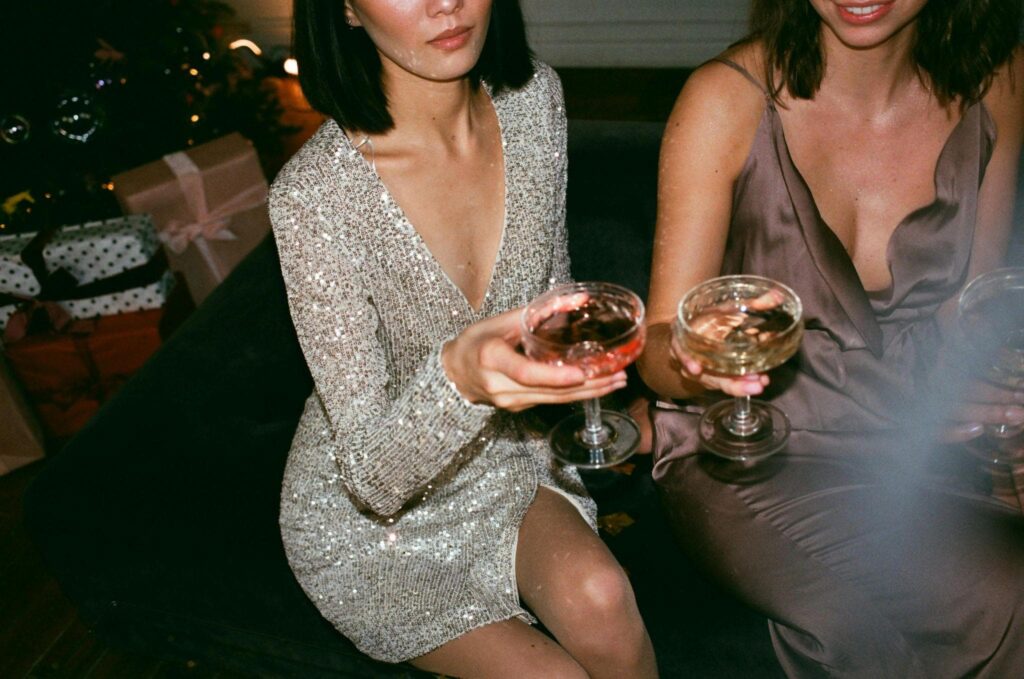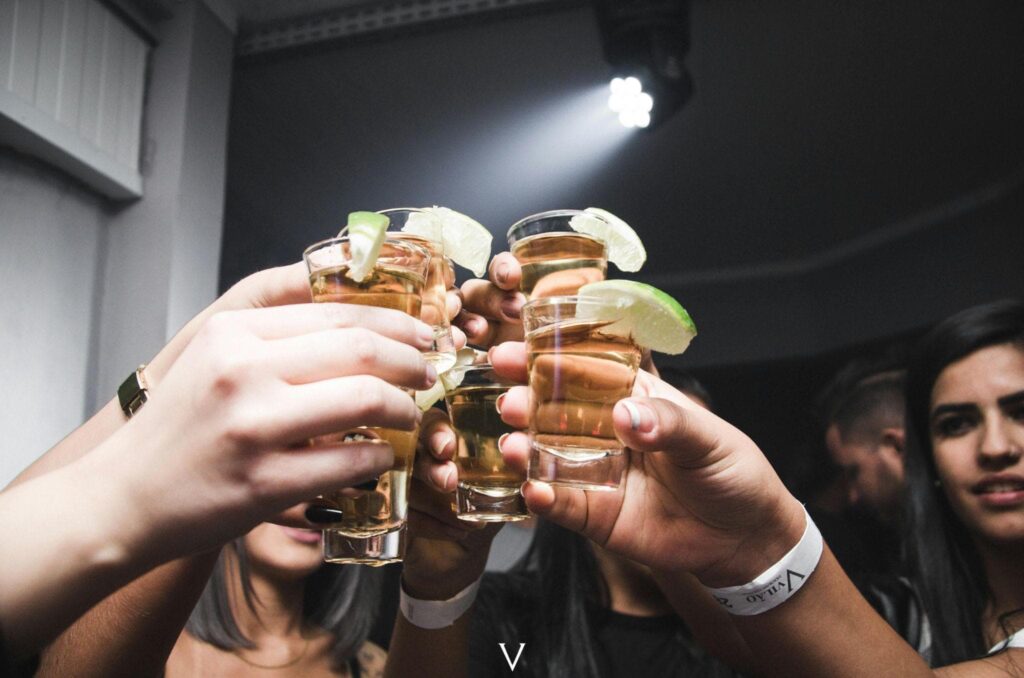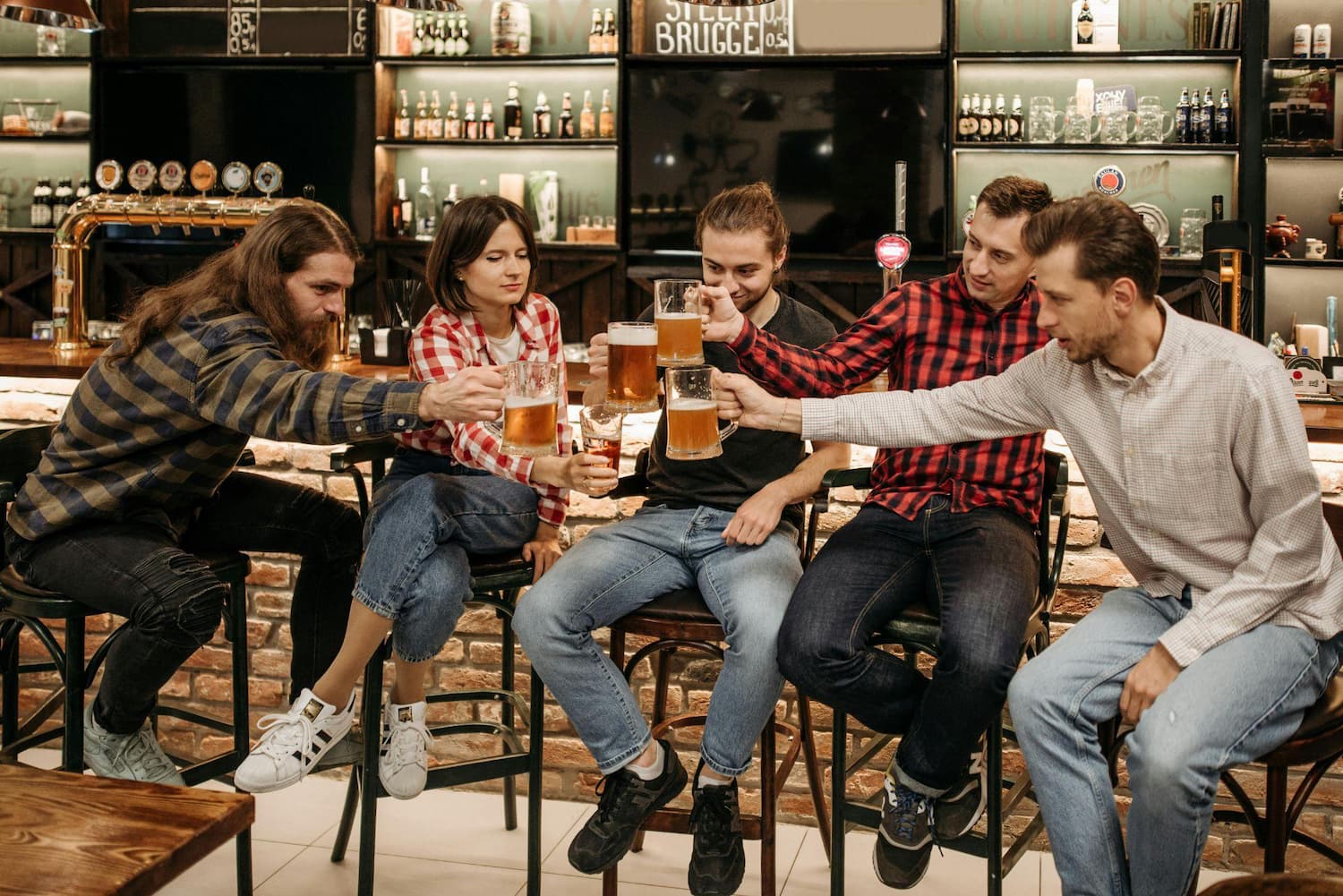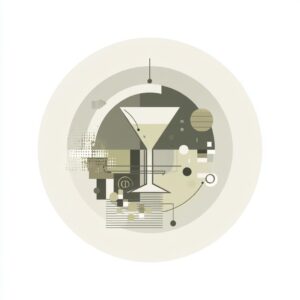Have you ever stopped to consider the role alcohol plays in our lives? It’s not just a drink; it’s woven into the very fabric of our modern society, appearing at everything from intimate dinners to grand celebrations, from a casual Tuesday evening on the couch to major life milestones. It’s the ubiquitous social lubricant, the quintessential party starter, and often, the silent companion in moments of solitude. But as we collectively raise our glasses, there’s a crucial, perhaps uncomfortable, question we must confront: “Alcohol Culture in Modern Society: Are We Normalizing Addiction?” It’s a profound query that forces us to examine the subtle, often insidious, ways media, marketing, and deeply ingrained social norms contribute to a perception of alcohol consumption that can unwittingly glorify unhealthy drinking habits and blur the lines between casual enjoyment and dangerous dependency. This isn’t just about individual choices; it’s about the pervasive cultural landscape that shapes those choices, often prompting us to adopt behaviors we might otherwise question.
The Glamorization of Alcohol in Media
Let’s be honest: media is an influential sculptor of our perceptions. It has this incredible knack for presenting realities, both aspirational and mundane, and alcohol is almost always front and center in the aspirational realm. The way it’s portrayed in our favorite shows, catchy songs, and endless social media feeds subtly, yet undeniably, shapes our understanding of its place in a “good” life. It’s rarely shown as a problem but rather as an enhancement, a catalyst for fun, or even a symbol of sophistication. This constant, uncritical exposure is where the glamorization truly takes root, making it incredibly challenging for us to distinguish between healthy moderation and overconsumption. The sheer volume of these portrayals creates a cumulative effect, slowly nudging societal norms toward a more permissive view of heavy drinking. We see it everywhere, so it must be okay, right? That’s the dangerous underlying message.
Cinema and Television: The “Cool” Drinker
Take a moment to picture your favorite film or TV series. Chances are, you can easily recall countless scenes where characters, often the protagonists or the effortlessly cool sidekicks, are sipping on something alcoholic. From James Bond’s shaken-not-stirred martinis to the endless wine nights on sitcoms, alcohol is consistently portrayed as sophisticated, desirable, or essential to the social fabric. Think about characters who deal with stress by downing a glass of whiskey or friends who bond over multiple rounds at a bar; these narratives rarely show the hangovers, the financial strain, or the damaged relationships that often accompany such consumption in real life. Instead, we see the quick wit, the deepened conversations, the problem-solving moments that seem to flow effortlessly after a few drinks. This continuous, largely consequence-free depiction creates a skewed reality, painting the “drinker” as sharp, confident, and utterly charismatic. It’s an alluring image, subtly suggesting that a drink is not just an option but a necessary accessory for a vibrant, successful life. It’s hard to shake that image when it’s so consistently reinforced on screen, making it difficult for viewers to recognize when their patterns might be creeping into problematic territory.
Music and Pop Culture: Cheers to Excess
Now, let’s talk about music and the broader pop culture landscape. If cinema paints a picture, music provides the soundtrack to our lives, and too often, that soundtrack is a chorus celebrating excess. How many songs can you think of that glorify partying, getting drunk, or blurring out your troubles with alcohol? From club anthems championing endless nights of shots to ballads mourning heartbreak with a bottle, the message is clear: alcohol is synonymous with a good time, escapism, or even emotional catharsis. Celebrities, too, whether musicians, actors, or reality TV stars, frequently share their escapades involving heavy drinking, often framed as part of their exciting, aspirational lifestyles. These cultural touchstones permeate our consciousness, especially that of younger, impressionable audiences, making it seem like boundless consumption is not only acceptable but an expected part of living life to the fullest. When artists you admire consistently portray intoxication as cool, daring, or even a sign of rebellion, it builds a powerful narrative. It almost feels like you’re missing out if you’re not participating. This normalizes behaviors that, if observed without the glamorous lens of pop culture, might otherwise be recognized as concerning.
Social Media: The Curated Reality of Consumption
And then there’s social media, the ultimate amplifier of curated realities. Scroll through your feeds, and you’ll inevitably stumble upon an endless stream of friends, acquaintances, and “influencers” showcasing their latest craft cocktail, vineyard tour, or boozy brunch. It’s always a golden hour; the drinks are perfectly garnished, and everyone is smiling, seemingly living their best life. These platforms create a constant, aspirational montage of alcohol consumption. People post elaborate home bar setups, share “wine o’clock” memes, or document their boozy escapades with witty captions and filters that make everything look effortlessly chic. What you don’t see, however, are the blurry photos of regrets, the mornings clouded by hangovers, or the quiet struggles with moderation. Social media thrives on positive, often exaggerated self-presentation, and alcohol fits seamlessly into that narrative. It’s a highlight reel, filtering out any negative consequences and instead focusing purely on the perceived glamour and social connection. This constant visual reinforcement makes alcohol seem not just acceptable but essential for a vibrant, socially active existence, subtly pressuring individuals to keep up with the perceived “good times” everyone else appears to be having.
Marketing’s Role in Shaping Perceptions
Beyond the organic (or seemingly organic) portrayal in media, the alcohol industry itself plays a monumental role in shaping our collective perceptions. It’s a sophisticated, multi-billion-dollar machine, and its primary objective is, quite understandably, to sell more products. However, the way they approach it is fascinating – and sometimes concerning. It’s less about the liquid in the bottle and more about the entire world they build around it, a world designed to make you believe that their product is the key to unlocking experiences, emotions, and even personal fulfillment. This isn’t just advertising; it’s a carefully crafted and consistently spun cultural narrative, year after year.
Lifestyle Branding: Selling an Experience, Not Just a Drink
Alcohol brands are masters of lifestyle branding. They rarely show you a bottle; instead, they whisk you away into a world of aspiration. Think about those commercials: are they highlighting the taste notes of a specific spirit, or are they showing a group of effortlessly cool friends laughing around a campfire, a couple sharing a romantic moment on a rooftop, or adventurers conquering a mountain peak before cracking open a celebratory beer? It’s about selling an ideal. Whether it’s adventure, sophistication, camaraderie, relaxation, or even success, the message is clear: our product isn’t merely a beverage; it’s the gateway to these desirable experiences and emotions. They want you to associate their brand not with just alcohol but with the very essence of a fulfilling, enjoyable life. This strategic pairing of product with aspiration makes alcohol seem like an indispensable ingredient for happiness and social acceptance rather than simply a consumable item. It’s a powerful psychological game. They’re not just selling drinks; they’re selling dreams, and those dreams often involve generous pours.
Sponsorships and Events: Ubiquitous Presence
You can hardly attend a major sporting event, music festival, or cultural gathering without encountering alcohol brand sponsorships. The logos are everywhere: plastered on stadium walls, illuminating concert stages, adorning race cars, and funding local community events. This ubiquitous presence makes alcohol an almost inseparable part of entertainment and celebration. It’s a clever strategy. By associating their products with our most cherished forms of leisure and communal enjoyment, alcohol becomes intertwined with positive, high-energy experiences. It’s not just a drink you choose; it’s an integral part of the atmosphere, a crucial component of the fun. This constant, uncritical exposure in celebratory contexts normalizes its consumption, making it seem like a natural and expected element of any significant social occasion. It’s a subtle yet powerful reinforcement that if you’re having a good time, alcohol must be involved, subtly erasing the possibility of enjoyment without it.

Targeting Specific Demographics: The Allure to New Consumers
Beyond the broad strokes of lifestyle branding and sponsorships, alcohol marketing often employs highly refined strategies to target specific demographics. Companies aren’t just looking for loyal customers; they’re constantly searching for new ones, and that frequently means subtly, or not so subtly, appealing to younger demographics or specific social groups. Think about the rise of brightly colored, fruit-flavored alcoholic beverages or the proliferation of themed cocktail kits aimed at a younger, social-media-savvy audience. Marketing messages might tap into desires for independence, belonging, or self-expression, framing alcohol as a tool to achieve these aspirations. This isn’t always about direct, overt advertising to minors (which is often illegal) but rather about creating a cultural buzz and an aspirational image that resonates with those just entering adulthood or navigating new social landscapes. It’s a careful dance designed to introduce alcohol as a fabulous, contemporary, and essential element of modern social life, potentially encouraging earlier or increased consumption patterns.
Social Norms and Cultural Acceptance
Beyond the calculated efforts of media and marketing, there’s a deeper, more insidious force at play: the very social norms and cultural acceptance surrounding alcohol. These are the unspoken rules, the ingrained habits, and the collective attitudes that dictate how we perceive and interact with alcohol in our daily lives. These norms often shape our behavior more profoundly than any advertisement ever could, making alcohol not just an option but the assumed choice.
The “Default” Choice: Celebrating with Alcohol
Consider this: what’s the first thing many of us reach for to celebrate a promotion, a birthday, a graduation, or even just making it through a tough week? For countless individuals, alcohol has become the undeniable “default” choice. Champagne flutes clink at weddings, beer flows at barbecues, and wine accompanies almost every significant dinner. This isn’t inherently bad, of course, but when alcohol becomes the only or primary way we acknowledge joyous occasions, it subtly communicates a powerful message: true celebration requires a drink. This cultural conditioning can make non-drinking choices feel unusual or even awkward. If you decline a drink at a party, how often are you asked “Why?” or met with a raised eyebrow? This quiet pressure, born from established social rituals, reinforces the idea that alcohol is an essential component of happiness and communal bonding, making it harder for individuals to opt out without feeling like they’re breaking an unwritten rule.
Pressure to Conform: The Social Lubricant Myth
Ah, the “social lubricant” myth. It’s a phrase we hear often, suggesting that alcohol is the key to unlocking confidence, easing inhibitions, and making social interactions smoother. And for many, it does feel that way. A drink can genuinely help people relax in new or intimidating social settings, sparking conversations and fostering connections. But this perceived benefit can quickly morph into a dangerous reliance. The pressure to conform and participate in drinking rituals can be immense. If everyone around you is loosening up with a beer or a glass of wine, you might feel compelled to join in, even if you don’t honestly want to. This social expectation can push individuals beyond their comfortable limits, leading to overconsumption to “fit in” or avoid feeling like the odd one out. It becomes a vicious cycle: you drink to feel comfortable, and then you feel more pressure to drink because everyone else is, reinforcing the idea that you need alcohol to navigate social landscapes. It’s a subtle form of coercion that makes alcohol consumption seem not just normal but essential for social ease.
Alcohol and Stress Relief: A Dangerous Coping Mechanism
We live in a high-stress world, don’t we? For far too many, alcohol has slipped seamlessly into the role of a primary coping mechanism for dealing with the daily grind, anxieties, and emotional burdens. The cultural narrative often whispers that a glass of wine after a long day or a few beers to “unwind” is the perfect antidote to stress. Initially, it may offer a fleeting sense of relaxation or detachment. But this narrative, repeated endlessly in casual conversation, media, and even within our internal dialogues, can be incredibly dangerous. It normalizes turning to a chemical substance to manage emotional discomfort, potentially masking healthier, more sustainable coping strategies like exercise, meditation, hobbies, or genuine connection with others. When alcohol becomes the default go-to for stress relief, it creates a perilous pathway where dependency can quietly take hold. We start to associate relief with drinking, making it harder and harder to imagine de-stressing without it, further cementing its role as a normalized solution to life’s challenges.
The Blurring Lines: Normalization vs. Addiction
This is where the rubber meets the road. When we analyze the pervasive media portrayals, the sophisticated marketing tactics, and the deeply embedded social norms, we have to confront the uncomfortable truth: are we, through these mechanisms, effectively blurring the lines between what’s considered “normal” drinking and what is, in fact, the insidious creep of addiction? It’s a critical distinction, and our society’s narrative around alcohol often makes it incredibly difficult to discern.
Early Onset and Binge Drinking: Concerning Trends
Let’s talk about some worrying trends. Data consistently shows that the age of alcohol initiation is often getting younger, and binge drinking, particularly among young adults, remains a significant public health concern. When alcohol is glamorized in media and normalized in social settings from an early age, it creates an environment where experimentation, and even heavy consumption, is seen as an almost inevitable part of growing up. Binge drinking, defined as consuming a large amount of alcohol in a short period to get drunk, is often portrayed as harmless fun, a “rite of passage,” or simply what “everyone does.” This casual attitude, fueled by cultural factors, minimizes the very real dangers: increased risk of accidents, violence, sexual assault, and, critically, a higher likelihood of developing alcohol use disorder later in life. We often dismiss these episodes as youthful indiscretions, failing to recognize them as potential warning signs on a path toward deeper dependency. The normalization of these patterns makes it harder for individuals to intervene or even recognize the risks they are taking themselves.
The “High-Functioning” Alcoholic: A Mask for Dependency
One of the most dangerous illusions perpetuated by our alcohol-centric culture is the myth of the “high-functioning” alcoholic. This is the individual who appears to have it all together – a successful career, loving relationships, active social life – yet secretly battles a severe dependency. Because they are “functioning,” their problem is often dismissed by themselves and those around them. “Oh, they just like to drink a lot,” we might say, or “They’re just letting loose.” This perception, reinforced by media portrayals of successful characters who drink heavily without apparent consequence, creates a profound mask for dependency. It delays recognition, allows the addiction to deepen, and prevents individuals from seeking help because, in their minds, they don’t fit the stereotypical image of someone with an alcohol problem. If society normalizes heavy daily or frequent drinking, even if it’s “behind closed doors,” it makes it incredibly difficult for both the individual and their loved ones to acknowledge that a problem exists, trapping them in a dangerous cycle.
The Silence Around Sobriety: Why It’s Still Taboo
While drinking is normalized, sobriety, ironically, often remains shrouded in a peculiar silence or even mild taboo. Try going to a social gathering and consistently declining alcohol. You’ll likely be met with a barrage of questions: “Are you pregnant?” “Are you on antibiotics?” “Are you driving?” “Are you feeling okay?” The mere act of choosing not to drink is often met with curiosity, discomfort, or even subtle judgment as if you’re breaking an unwritten social contract. This societal pressure to explain one’s sobriety reinforces the idea that drinking is the only acceptable or “normal” choice. It can make individuals who are trying to reduce their consumption or embrace sobriety feel alienated as if they’re swimming against a strong cultural current. This unspoken expectation to drink creates a barrier to healthier choices and contributes to the normalization of alcohol consumption as the universal social default, making it harder for people to confidently choose a different path without feeling like an outsider.
Counter-Narratives and Responsible Consumption Movements
Despite the powerful currents of glamorization and normalization, there’s a growing wave pushing back, championing healthier relationships with alcohol or even total abstinence. These counter-narratives and responsible consumption movements offer a much-needed alternative perspective, highlighting that a fulfilling life doesn’t require a constant buzz of activity. They are actively working to reshape social attitudes and challenge the deeply ingrained assumptions about alcohol’s role in society.
The Rise of Sober Curious and Mindful Drinking Movements
One of the most exciting shifts we’re seeing is the emergence of the “sober curious” and “mindful drinking” movements. These aren’t necessarily about declaring oneself an “alcoholic” and entering traditional recovery programs (though those are vital for many); instead, they represent a broader societal curiosity about reducing alcohol consumption or exploring periods of complete sobriety. People are questioning their relationship with alcohol, driven by desires for better mental clarity, improved physical health, enhanced sleep, and deeper, more authentic social connections. The sober curious movement, in particular, encourages individuals to explore life without alcohol, even temporarily, without the pressure of a label. Mindful drinking, on the other hand, emphasizes conscious consumption – savoring drinks, being aware of their effects, and understanding one’s limits. These trends are powerful because they offer a new narrative: one where a vibrant social life, genuine happiness, and profound experiences are not only possible without alcohol but perhaps even enhanced by its absence or moderated presence. They challenge the old assumption that alcohol is necessary for fun.

Media and Marketing with Responsibility: A Glimmer of Hope
While much of media and marketing has contributed to alcohol’s glamorization, there are indeed glimmers of hope – examples where responsible messaging is taking center stage. Some forward-thinking brands and media outlets are beginning to recognize their role in shaping public perception and are actively working to promote healthier attitudes toward consumption. This isn’t about being preachy; it’s about offering balanced portrayals and genuine alternatives.
Here are some examples where media and marketing are showing more responsibility:
- Non-alcoholic alternatives: The rapid proliferation and sophisticated marketing of non-alcoholic beers, wines, and spirits. These products are no longer relegated to a dusty corner of the store; they’re being presented as premium, delicious choices for any occasion, often with sleek branding and prominent placement.
- “Dry January” and “Sober October” campaigns: Mainstream media outlets and even some beverage companies actively promote these month-long sobriety challenges, providing resources, tips, and a sense of community for participants.
- Influencer collaborations for mindful drinking: Instead of just promoting binge drinking, some influencers are now partnering with brands to showcase moderate consumption, non-alcoholic options, or the benefits of taking a break from alcohol.
- Public service announcements embedded in entertainment: While still rare, some TV shows or films include subtle, realistic portrayals of the negative consequences of excessive drinking or characters explicitly choosing not to drink for health or personal reasons.
- Responsible advertising codes: Industry bodies are developing stricter guidelines for alcohol advertising, discouraging messages that promote overconsumption, link alcohol to social success, or target underage individuals.
These examples, while not yet dominant, signify a promising shift, demonstrating that it’s possible to engage with alcohol, or its absence, in a way that prioritizes well-being.
Public Health Initiatives: Shifting the Narrative
Beyond individual and commercial efforts, public health initiatives play a crucial role in countering the normalized narrative of alcohol. Governments and non-profit organizations around the world are increasingly investing in comprehensive campaigns designed to raise awareness about alcohol-related harms and promote healthier drinking cultures. These initiatives often utilize evidence-based strategies, focusing on education, prevention, and harm reduction. They might include widespread public service announcements (PSAs) highlighting the risks of impaired driving or the long-term health consequences of excessive drinking. Some campaigns focus on encouraging responsible hosting, promoting designated drivers, or providing clear guidelines on low-risk drinking limits. Others work to destigmatize seeking help for alcohol use disorder, providing accessible resources and support networks. These efforts, though sometimes facing an uphill battle against deeply ingrained cultural habits and powerful marketing machines, are vital for shifting the collective narrative, arming individuals with knowledge, and fostering an environment where making healthier choices about alcohol isn’t just possible but celebrated.
Conclusion
We’ve taken a deep dive into the complex tapestry of alcohol’s presence in modern life, exploring how everything from the silver screen to our social media feeds, as well as sophisticated marketing campaigns and the quiet hum of social expectations, contributes to its pervasive glamorization. We’ve seen how these forces, often subtly, can nudge us towards unhealthy drinking habits, making it increasingly difficult to answer the crucial question: Alcohol Culture in Modern Society: Are We Normalizing Addiction? The uncomfortable truth is that, in many ways, we are. The lines between casual enjoyment and genuine dependency have become alarmingly blurred, making it increasingly difficult for individuals and society as a whole to recognize when consumption crosses into problematic territory.
But here’s the thing: recognizing the problem is the first step toward a solution. We’ve also seen the hopeful rise of counter-narratives – the sober curious movement, mindful drinking, and responsible initiatives from media, marketing, and public health. These emerging trends offer a beacon of hope, demonstrating that a shift in perception is not only possible but already underway. Ultimately, fostering a more balanced and health-conscious alcohol culture in modern society is a collective responsibility. It demands vigilance from individuals, ethical self-regulation from industries, and proactive engagement from communities and governments. It’s about creating a world where celebration doesn’t automatically equate to intoxication, where relaxation isn’t solely found in a bottle, and where choosing not to drink is met with respect, not interrogation. Only then can we truly begin to dismantle the subtle normalization of addiction and build a healthier, more conscious relationship with alcohol for generations to come?




